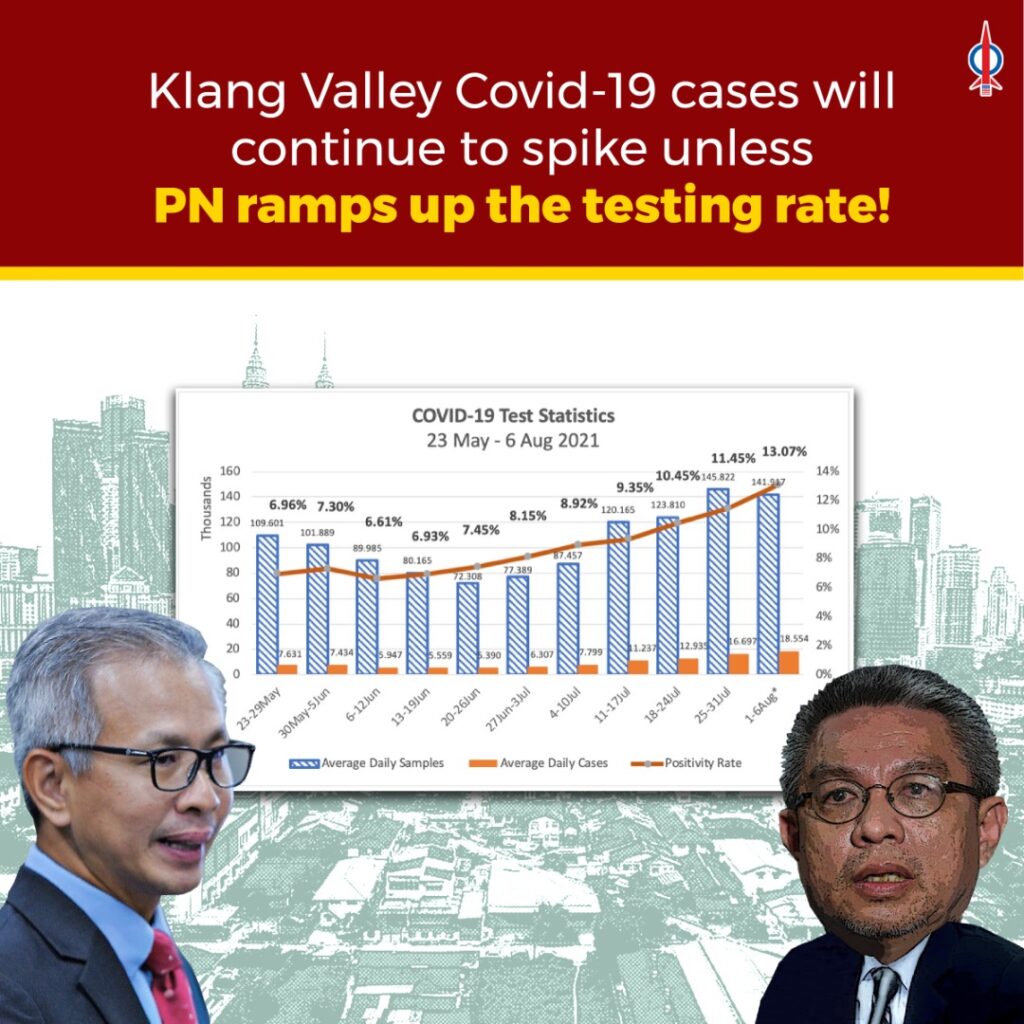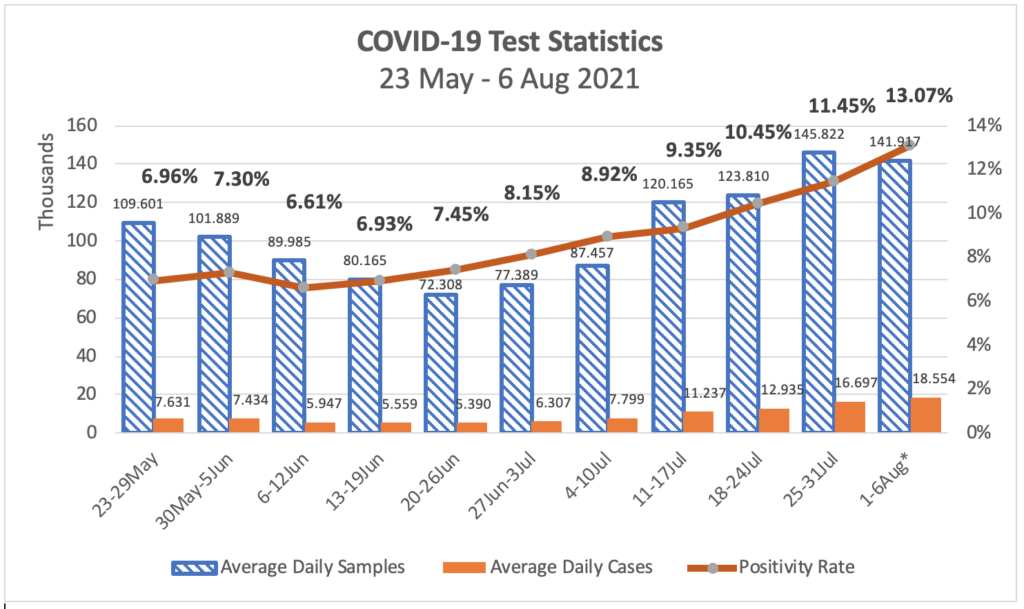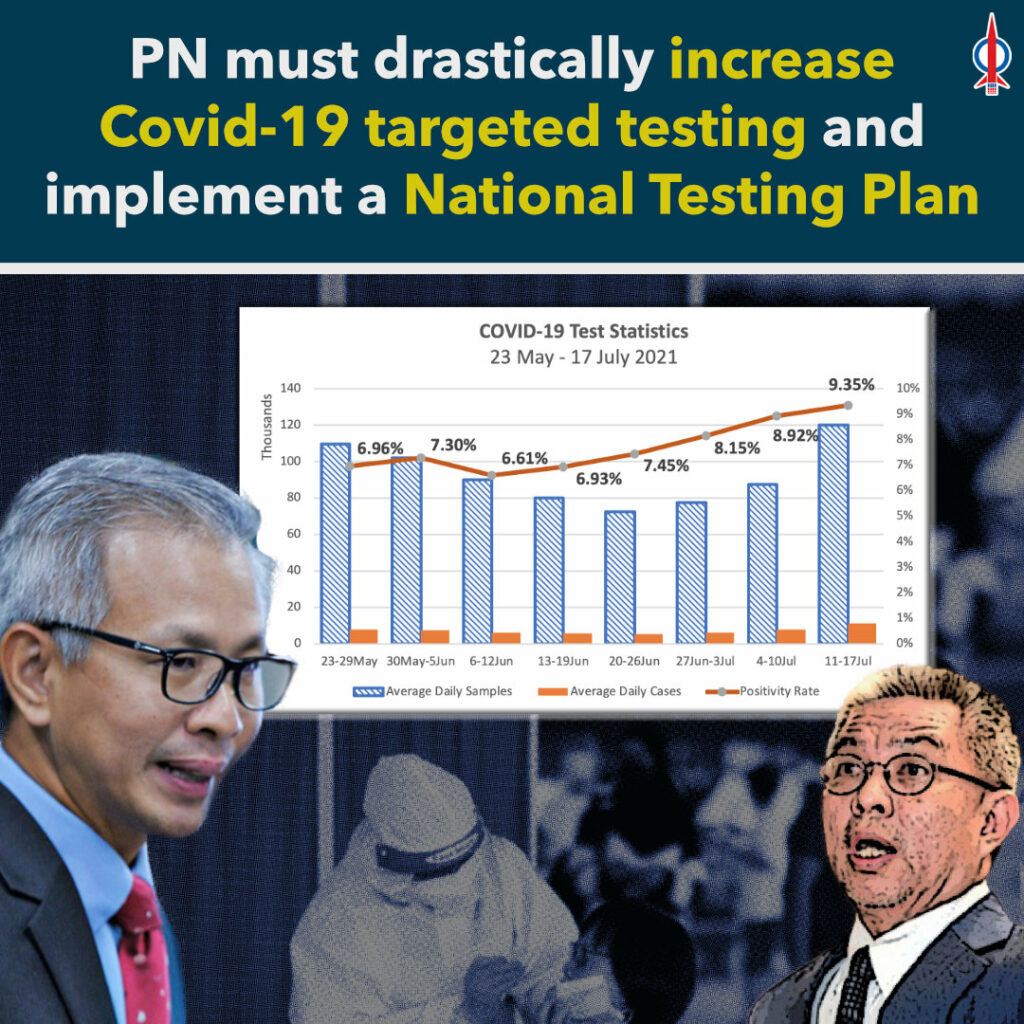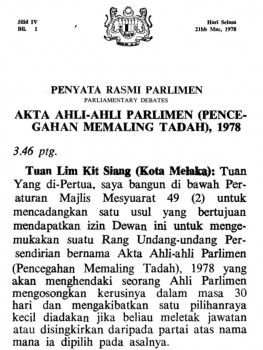Media Statement by MP for Damansara and DAP National Publicity Secretary, Tony Pua in Kuala Lumpur on 7 August 2021:

The biggest reason why Covid-19 positive cases continues to spike in the Klang Valley is due to insufficient tests being carried out
Yesterday, the Deputy Health Director-General Health Dr Chong Chee Kheong listed three factors for the worsening crisis. The first was the ‘looser’ movement control order (MCO) after the enhanced MCO was lifted on 17 July while restrictions for limited economic sectors were eased.
The other reasons cited were the after effects of the 20 July Aidiladha celebrations as well as the impact of the more dominant and infectious Delta strain of Covid-19 virus. However, neither the Health Ministry or Dr Chong has provided any statistics to date to support these assertions.
What Dr Chong failed to note however, is the fact that the Klang Valley has been under MCO since 24 May to date (nearly 11 weeks), with varying degrees of restrictions. The overwhelming bulk of economic and social activities have been completely shut down. And yet, the number of Covid-19 cases have continued to spiral very rapidly. Most of these cases have been classified as ‘sporadic’ community cases.

The above chart tracks average daily test samples and Covid-19 positive cases on a weekly basis. It clearly shows that the positivity rate (number of positive cases divided by number of test samples) has been rising almost continuously since the first week of MCO, despite the lockdown. The rise in positivity did not just happen in the last 2 or 3 weeks after the lifting of the ‘enhanced’ MCO or the Aidiladha celebrations.
Instead, from the data provided by the Health Ministry, the most obvious reason why the number of Covid-19 cases and the positivity rate has been rising persistently is because it has failed to carry out sufficient tests, proportionate to the positivity data from the test samples.
It is clear that despite the positivity rate was well above 6.5% for the first few weeks of MCO, the drastic decline in testing carried out have contributed significantly to subsequent drastic rise in Covid-19 cases. The average daily test samples taken dropped by 34% from 109,601 cases in the first week of MCO to only 72,308 cases in the fifth week.
The severe shortage of tests contributed to the increased number of undetected cases in the community, the close contacts not traced and the necessary isolation not enforced. The absence of these measures have led to the drastic increase in positivity in the last few weeks.
It is true that the Health Ministry has since increased the number of test samples to above 140,000 samples a day in the last 2 weeks. However, the positivity rate has already spiked even faster to more than 13% this week. This is more than double the World Health Organisation (WHO) recommended threshold of 5%.
If at the positivity rate of 6.5%, the number of test samples taken was not sufficient then it is crystal clear that at double the rate, 13% today, the number of tests being carried out is even more insufficient.
We call upon MoH to drastically increase its targeted testing and put in place a National Testing Plan, as part of a whole of government and whole of nation approach to fighting Covid-19 and its variants. They must be committed to large scale implementation of the Find, Test, Trace, Isolate and Support (FTTIS) methodology to contain the virus, as proposed in the National Recovery Plan.
Without this, cases will continue to rise for the next few weeks until the community achieves a degree of herd immunity via vaccination or infection. The consequence of which will be an over-stretched health service were beds, equipment and facilities are insufficient to cope with the needs.
This plan is not for the MoH to execute alone, but for all stakeholders including private hospitals, private clinics, factories and work places, and even individuals via the now available self-test kits.




